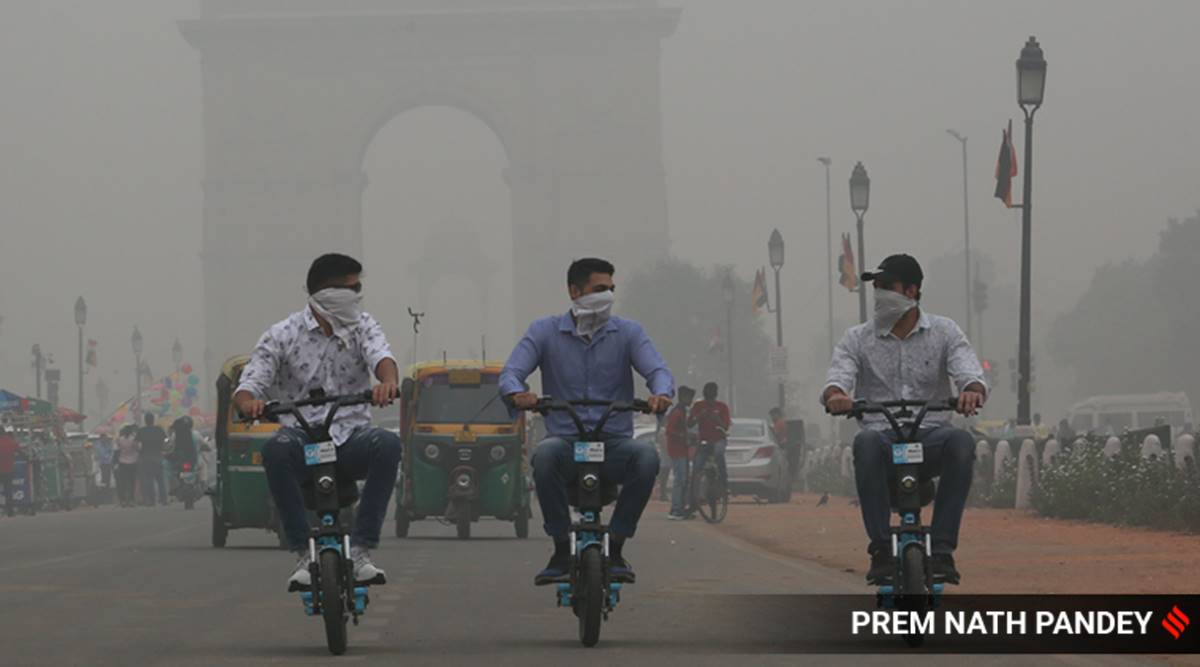 Avoid stepping outdoors during early morning and late evening hours.
Avoid stepping outdoors during early morning and late evening hours.Delhi’s air quality slipped to the ‘very poor’ category, with a 24-hour average AQI reading of 366 as per the Central Pollution Control Board (CPCB), for the second time this season. Parts of the city also saw air quality turn ‘severe’. AQI of neighbouring NCR towns was also ‘very poor’ — 344 at Ghaziabad, 369 at Noida, 334 at Gurgaon and 360 at Faridabad.
As per government agencies, calm surface level winds — wind speed below 3 kmph — around Delhi and an increase in share of pollutants from stubble burning in Punjab and Haryana was behind the dip in air quality. A report from the Centre’s System of Air Quality and Weather Forecasting and Research said share of PM 2.5 pollutants from stubble burning in Delhi’s air was 17% Friday, higher than Thursday’s 8%.
Environment Pollution (Prevention and Control) Authority (EPCA) member Sunita Narain said, “Our recommendation is that we must ensure enforcement on ground to check all polluting sources. We are also reiterating advice given to be safe from Covid — go out when absolutely necessary, wear masks.”
Light winds and stagnant meteorological conditions will continue till Monday and air quality over Delhi-NCR is likely to remain ‘very poor’ over the weekend, as per the Ministry of Earth Sciences’ Air Quality Early Warning System (EWS) for Delhi. “Large increase in fire points was observed over Punjab, Haryana, UP, which are likely to impact air quality of Delhi-NCR,” it said.
Data from Haryana State Pollution Control Board showed 101 fire counts Friday, while data from the Punjab Remote Sensing Centre showed 1,341 fire counts Thursday. Haryana and Punjab have recorded 3,470 and 10,775 fire counts so far.
A Delhi government official said mixing depth over the city — vertical height available for dispersion of pollutants — reduced significantly Thursday onwards due to cloud cover: “Mixing depth increases in sunlight and there is dispersion of pollutants… Wind speed is around 1kmph (as of 6 pm), which is very low to help disperse pollutants.”
As of 2 pm Friday, 8 out of 36 monitoring stations in Delhi were in the ‘severe’ category (AQI above 400) including Anand Vihar, Mundka, Wazirpur and Alipur, while others were in ‘very poor’ range, except Lodhi Road which was ‘poor’. By 5 pm, the number of ‘severe’ stations was four.
In some parts, concentration of particulate matter pollutants reached nearly seven times their acceptable limit, data from DPCC shows. Concentration of PM 10 peaked at 719 µg/m3 at East Delhi’s Anand Vihar at 9 am and at 915 µg/m3 in North Delhi’s Alipur, against the 24-hour acceptable limit of 100 µg/m3. PM 2.5 levels in West Delhi’s Mundka peaked at 523 µg/m3 and at 350 µg/m3 in India Gate at 10 am, against the 24-hour acceptable limit of 60 µg/m3.
Environment minister Gopal Rai said DPCC is closely monitoring 13 air pollution hotspots. He added that a campaign to encourage people to turn off their vehicles at traffic signals to reduce vehicular pollution would begin at all 70 assembly constituencies from October 26.